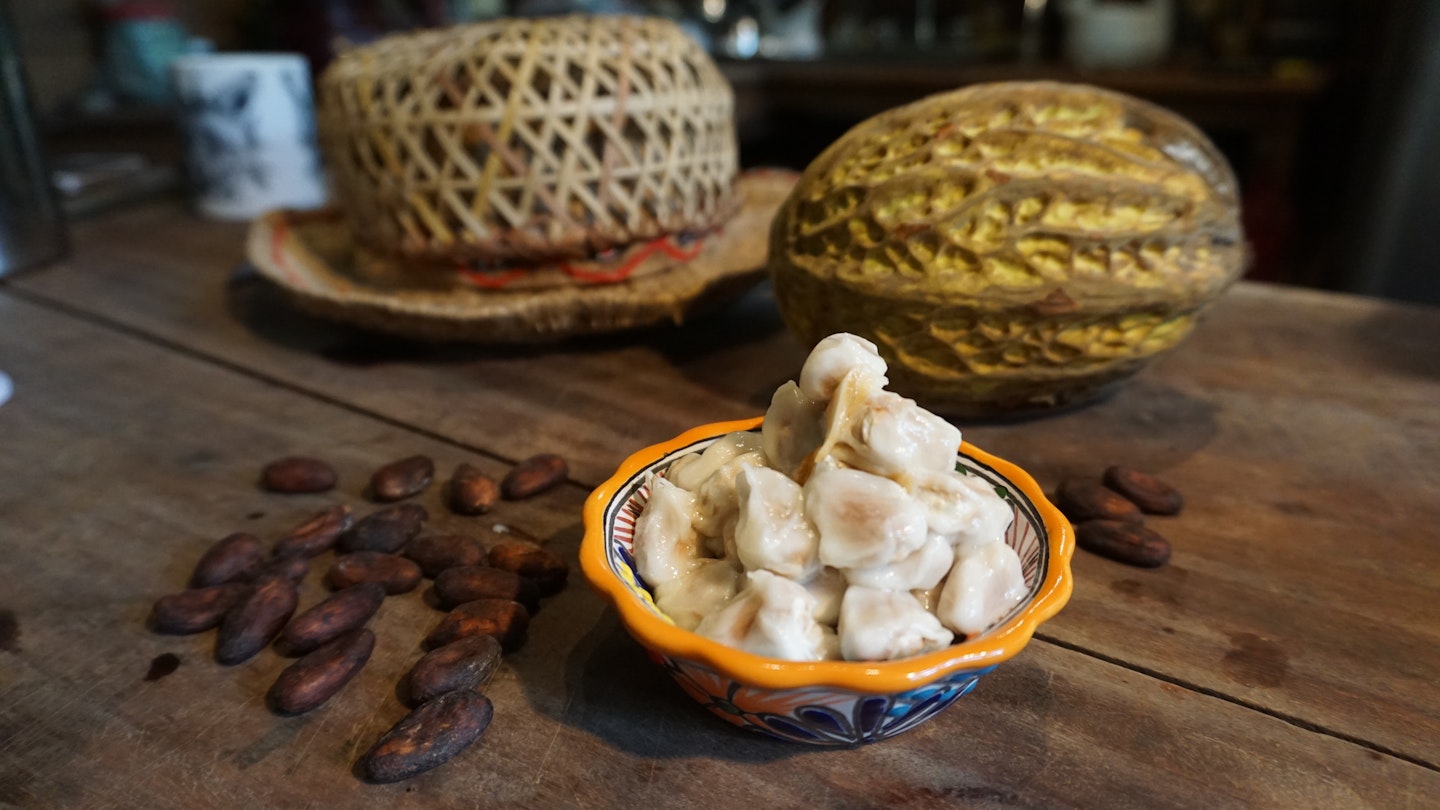
The origins of cacao can be traced back to Latin America, where the plant was utilized to create fermented chocolate beverages dating back to 450 BCE. Therefore, thousands of years of chocolate consumption have established Latin America and the Caribbean as the ideal regions for chocolate tours.
Why Cacao is Specific to Latin America and the Caribbean
The cacao fruit is transformed into one of the world’s most cherished sweets. The mighty cacao tree flourishes naturally at 20 degrees above and below the equator. For centuries, cacao has held spiritual significance for many Indigenous groups in Latin America and the Caribbean, making chocolate tours an experience that is both delectable and educational.

Discover BriBri Artisanal Traditions, Costa Rica
The Indigenous BriBri people of the northern region of Costa Rica have cultivated cacao for over 400 years. Visitors can learn about this superfood and its rich history through immersive experiences at Talamanca Chocolate in Puerto Viejo.
This family-operated organic cacao farm is nestled within lush botanical food gardens. For three decades, the farm, predominantly staffed by BriBri people, has crafted award-winning chocolate. Participants can engage in a hands-on, three-hour cacao experience, where they’ll be introduced to BriBri traditions. The chocolate-making process includes everything from growing cacao trees and roasting cacao nibs to molding chocolate bars. What makes this tour exceptional is the fact that every step is performed by hand, including the use of traditional cast iron hand mills.

For those with dietary restrictions, all Talamanca Chocolate products are gluten-free and vegan. The chocolate makers often experiment with unique flavors, such as white chocolate with turmeric. Additionally, some chocolate makers incorporate crystals into the process, believing that these can infuse energy and harness the healing properties of the stones.
Take a Walking Tour Through Organic Cacao Trees, Belize
It is widely believed that ancient Mesoamerican cultures were the first to consume cacao, while others argue that cacao was first cultivated in the Amazon rainforest. Chocolate consumption can be traced back to 1000 BCE as an integral part of Mayan culture in Belize.
High-quality cacao was reserved for Mayan priests, and lower-grade cacao was utilized as currency. In sacred ceremonies, chocolate served both as a celebratory drink and a health elixir. Today, visitors can explore this rich history in Belize at the Copal Tree Lodge Bean to Bar Class.

The intimate tour begins with a stroll through organic cacao trees and a demonstration of how grafting is used to produce high-quality chocolate. The cacao plantation is surrounded by various trees and herbs offering diverse flavors, including coffee, vanilla, cardamom, cinnamon, and allspice. Participants can taste-test along the way and enjoy the opportunity to open a cacao pod to discover the fresh tangy pulp, which tastes entirely different from the final chocolate product.
Within the chocolate-making facility, guests will create their very own bar of chocolate from scratch—including roasting, winnowing, and conching using both innovative equipment and granite surfaces. This luxurious chocolate-making process blends machinery with traditional methods like using a volcanic metate for hand-tempering the batch. Participants will sample the chocolate throughout the experience, noticing how each step alters the cacao’s flavor profile. This chocolate tour is nothing short of a treat!
Visit a Road-Side Local Operation in Pointe Baptiste, Dominica
The Pointe Baptiste estate represents a small-scale cacao plantation and is considered the best place in Dominica to purchase locally made chocolate. Visitors can simply request a tour upon arrival and will be shown the unique process by which the family team of chocolate makers processes cacao at Pointe Baptiste.
For a decade, the estate has been producing chocolate to meet local demand, crafting about 500 bars a week. The operation focuses primarily on local sales, making it an exclusive opportunity to taste their exquisite chocolate. Here, natural fermentation, sun-drying of cocoa beans, and in-house processing all take place in a compact basement warehouse equipped with machinery for roasting, grinding, and refining the cocoa beans.
Touring the facility is complimentary, although visitors will undoubtedly be tempted to buy a few bars of the uniquely flavored high-quality chocolate crafted from local ingredients, such as sea salt.
This article was first published on Jan 10, 2020, and updated on Jun 21, 2022.




